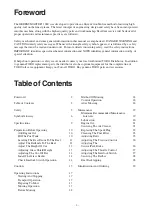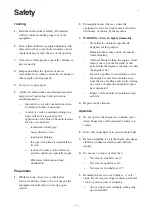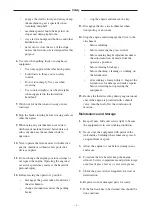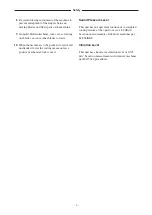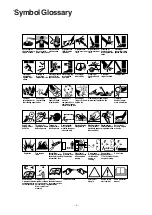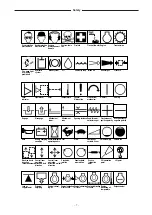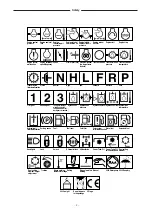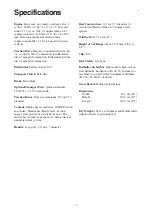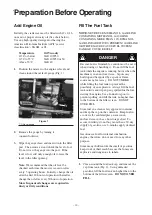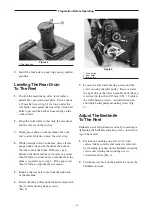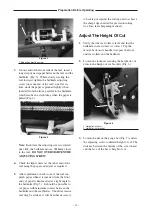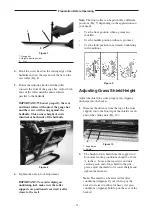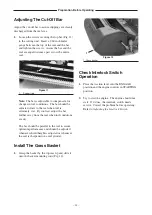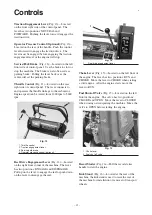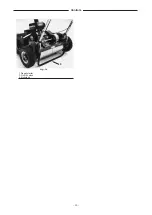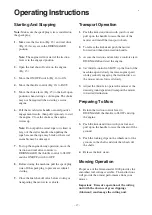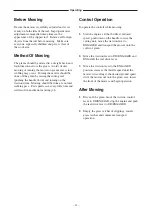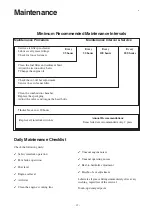
•
engage the clutch slowly, and always keep
the machine in gear, especially when
travailing downhill;
•
machine speeds should be kept low on
slopes and during tight turns;
•
stay alert for bumps and hollows and other
hidden hazards;
•
never mow across the face of the slope,
unless the lawn mower is designed for this
purpose.
6.
Use care when pulling loads or using heavy
equipment.
•
Use only approved drawbar hitch points.
•
Limit loads to those you can safely
control.
•
Do not turn sharply. Use care when
reversing.
•
Use counterweight(s) or wheel weights
when suggested in the instruction
handbook.
7.
Watch out for traffic when crossing or near
roadways.
8.
Stop the blades rotating before crossing surfaces
other than grass.
9.
When using any attachments, never direct
discharge of material toward bystanders nor
allow anyone near the machine while in
operation .
10.
Never operate the lawn mower with defective
guards, shields or without safety protective
devices in place.
11.
Do not change the engine governor settings or
overspeed the engine. Operating the engine at
excessive speeds may increase the hazard of
personal injury.
12.
Before leaving the operator’s position:
•
disengage the power take-off and lower
the attachments;
•
change into neutral and set the parking
brake;
•
stop the engine and remove the key.
13.
Disengage the drive to attachments when
transporting or not in use.
14.
Stop the engine and disengage the drive to the
attachment
•
before refueling;
•
before removing the grass catcher;
•
before making height adjustments unless
the adjustment can be made from the
operator’s position.
•
before clearing blockages;
•
before checking, cleaning or working on
the lawnmower;
•
after striking a foreign object. Inspect the
lawnmower for damage and make repairs
before restarting and operating the
equipment.
15.
Reduce the throttle setting during engine runout
and, if the engine is provided with a shutoff
valve, turn the fuel off at the conclusion of
mowing.
Maintenance and Storage
1.
Keep all nuts, bolts and screws tight to be sure
the equipment is in safe working condition.
2.
Never store the equipment with petrol in the
tank inside a building where fumes may reach
an open flame or spark.
3.
Allow the engine to cool before storing in any
enclosure.
4.
To reduce the fire hazard, keep the engine,
silencer, battery compartment and petrol storage
area free of grass, leaves, or excessive grease.
5.
Check the grass catcher frequently for wear or
deterioration.
6.
Replace worn or damaged parts for safety.
7.
If the fuel tank has to be drained, this should be
done outdoors.
Safety
– 4 –
Summary of Contents for 04052TE
Page 16: ...Fig 16 1 Recoil starter 2 On Off switch 3 Kickstand Controls 16 3 2 1 ...
Page 30: ......
Page 31: ......
Page 32: ......


